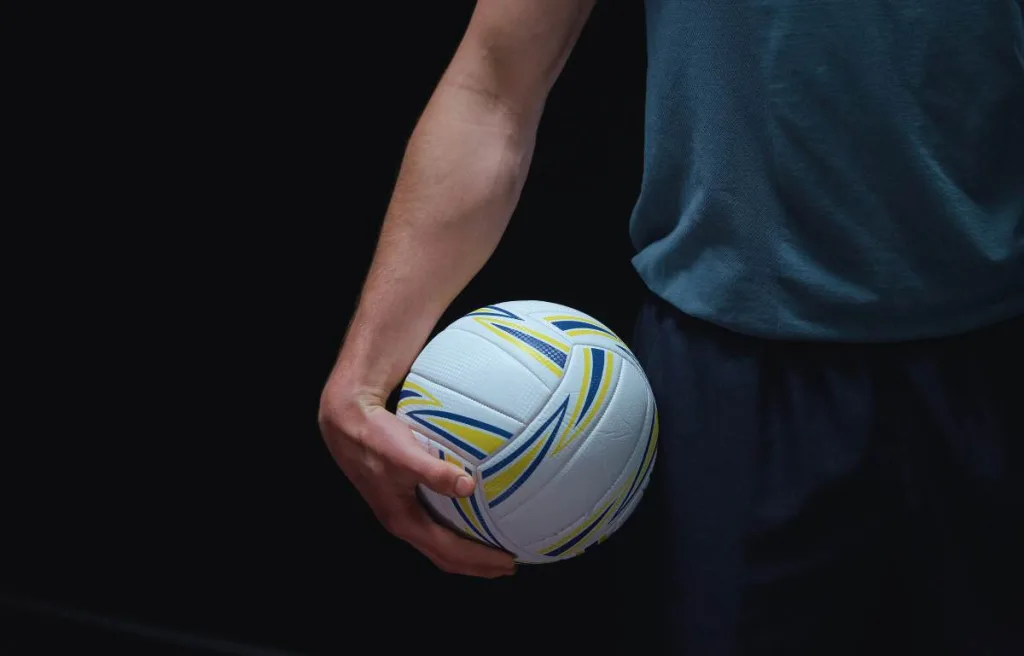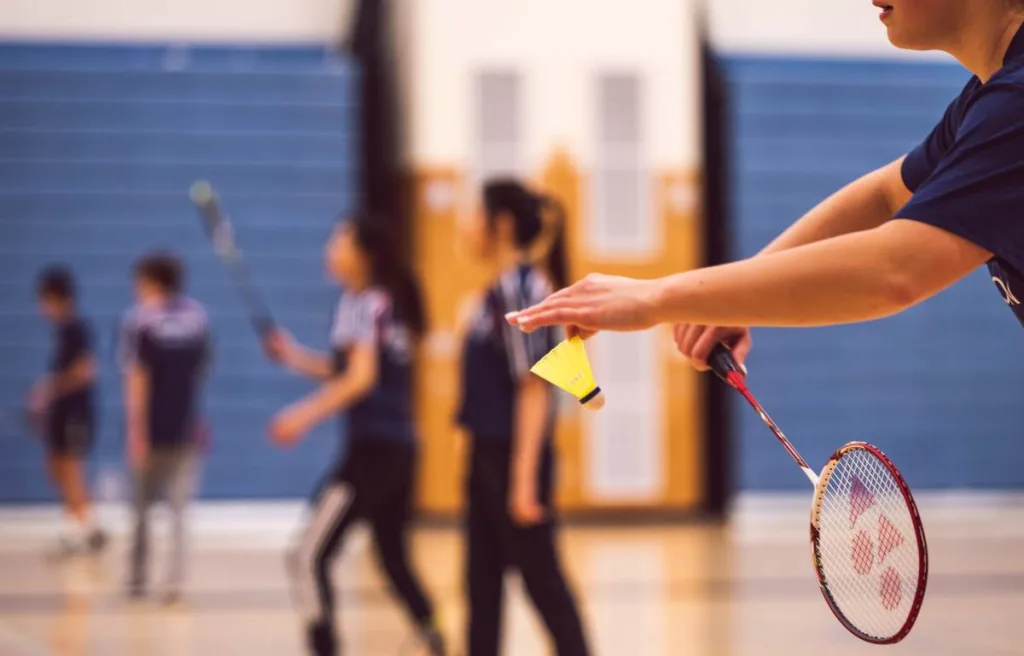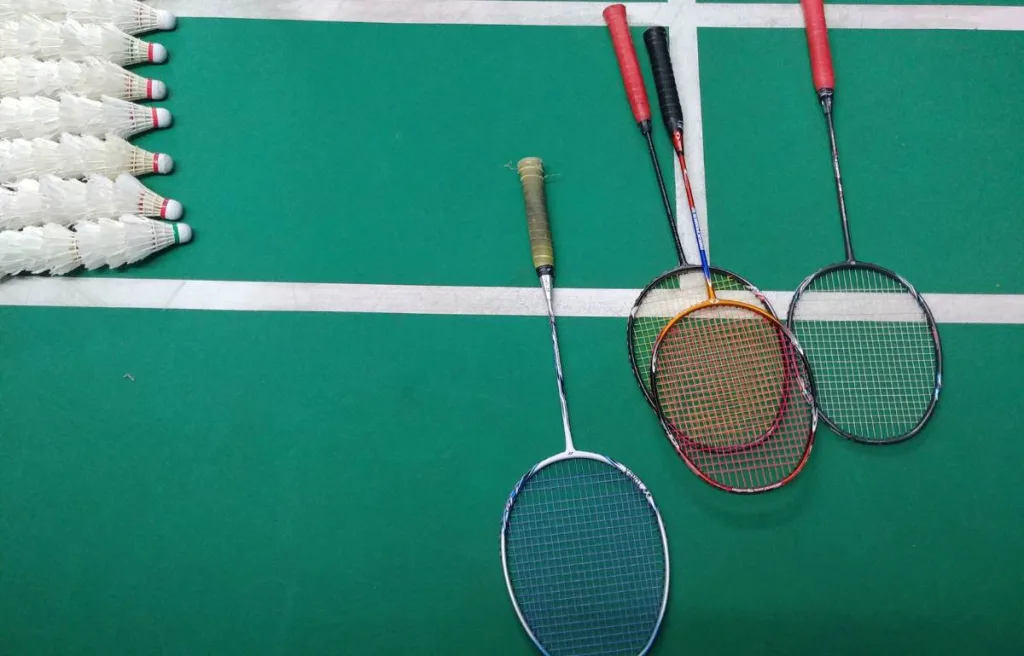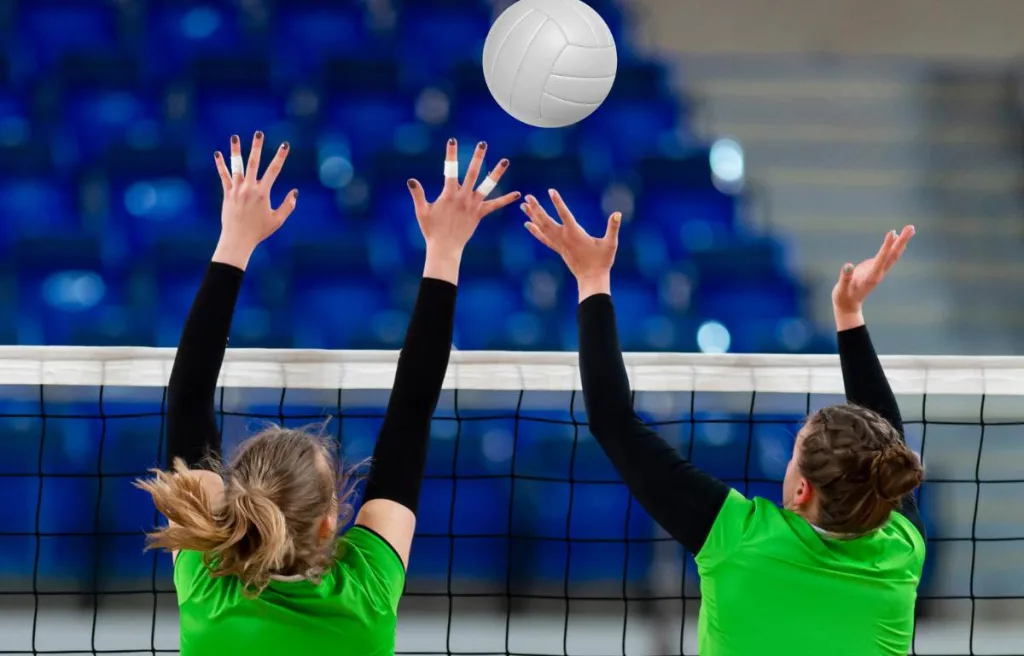Mastering the Court: Expert Guide to Volleyball vs Badminton

Before getting into volleyball, my journey in sports began with badminton, playing at an amateur level.
My cousins, who actively competed in badminton at the district level, played a significant role in influencing my decision to pursue the sport.

Our family gatherings often became mini badminton tournaments, developing lasting bonds and a shared passion.
This personal backstory makes this comparison guide especially dear to me.
Volleyball vs Badminton: The main difference between volleyball and badminton is that volleyball is a team sport where teams play with a big ball on a large court, focusing on coordination and hitting the ball hard.
Badminton is usually played alone or with a partner, using a small, light shuttlecock and rackets on a smaller court.
I will comprehensively compare both exciting sports in this article, discussing their rules, equipment differences, court dimensions, and more.
So, stay connected with me till the end because this guide will be full of interesting insights and learning opportunities.
Volleyball vs Badminton: Detailed Comparison
Volleyball and badminton are both popular court sports.
But both of them have unique characteristics that set them apart.
Below is the list of 6 key aspects that differentiate both sports, highlighting their unique qualities.
1) Basic Rules and Objectives
In volleyball, the main goal is to send the ball over the net to the opponent’s court, preventing it from landing on your side.
The game follows a rally scoring system (previously side out scoring), allowing any team to score a point, regardless of who serves.
The matches consist of best-of-five sets, each comprising 25 points.
After each point, the serving team rotates, changing the server and player positions.

In badminton, you aim to hit the shuttlecock over the net into your opponent’s court, making it difficult for them to return it properly.
You score a point when the shuttlecock lands in the opponent’s court or if they commit a fault.
Like volleyball, badminton uses a rally scoring system.
Each rally starts with an underhand serve, hit below the waist.
The rally continues until a player drops the shuttlecock to the ground or hits it out of bounds.
Matches typically consist of the best-of-three games, each reaching 21 points.
To win a game, a player or team needs a two-point lead.
If the score ties at 29-29, the next point decides the game’s winner.

2) Equipment
In volleyball, the primary equipment is the ball, which is explicitly designed for durability and optimal control.
Another crucial gear, and my personal favorite, is the volleyball shoes.
They are crucial for providing support and traction on the court.
They typically have a gum rubber sole for better grip and cushioning to absorb the impact during jumps.
Other volleyball accessories may include knees, specialized jerseys, and shorts for ease of movement.

In badminton, the essential equipment includes lightweight rackets and a feathered or plastic shuttlecock.
It is known for its unique aerodynamic properties.
The badminton shoes aim to support lateral movements and provide sufficient grip.
Their sole is typically thinner than the volleyball shoes.
The players in badminton might also use wristbands and headbands for sweat management.
Comfortable and breathable clothing makes moving comfortably during the fast-paced game easy.

3) Court Dimensions and Layout
Volleyball courts are larger than badminton courts, with 18m * 9m as their dimensions.
They consist of two halves, separated by a net standing at a height of approximately 2.3m.
Comparatively, badminton courts are smaller, with 13.4m x 6.1m dimensions for doubles and slightly narrower for singles, having a net height of 1.55m.
Remember that the size and layout of the court play a crucial role in defining the playing style, whether it’s volleyball team formations or badminton’s fast-paced movements.
4) Team Dynamics
In volleyball, six players are on each side, each with specialized skills like setting, spiking, and blocking.
However, there is an exception in beach volleyball, which has two players in each team.
Badminton has a single player on each side and two players in the case of a doubles match format.
The match’s success depends more on individual skill, agility, and shot placement, whether in singles or doubles.
The difference in how teams work together in volleyball and the more solo badminton style leads to different gameplay.
5) Physical and Mental Demands
Volleyball players should be strong and energetic.
They often jump for spikes and blocks, and staying active is important because games can last longer.
They also need to think quickly and work together well.
Knowing the proper position on the court and being clever against the other team is vital.
Badminton players, on the other hand, need to be fast and move smoothly.
The game moves quickly, and they must move side to side a lot to reach the shuttlecock.
It’s also essential for them to think on their feet.
They should be able to guess where the shuttlecock will land and plan their next action fast.
6) Popularity and Global Reach
Volleyball is popular worldwide, especially in Brazil, Italy, and the United States.
It’s a common sport in schools and clubs, and many people enjoy watching professional volleyball matches.
It has been a part of the Olympics since 1964, which has helped increase its popularity.
Badminton is extremely popular in Asian countries like China, Indonesia, and Malaysia.
These countries often dominate in international competitions.
While it’s more prevalent in Asia, badminton is gaining fans worldwide.

Can you wear volleyball shoes for badminton?
When considering whether to wear volleyball shoes for badminton, it’s essential to understand the specific needs of each sport. Here are some points to consider:
In short, you can use volleyball shoes for badminton.
But, they may not be ideal due to weight, flexibility, and movement support differences.
What is the difference between smash and spike?
A smash is a powerful, downward shot in badminton.
You hit the shuttlecock steeply downwards into the opponent’s court.
It’s a fast and aggressive move to make it hard for the opponent to return.
A spike, on the other hand, is a strong, downward hit in volleyball.
You jump and hit the volleyball forcefully over the net and into the opponent’s court.
Its purpose is to score points and put pressure on the opposite team.
